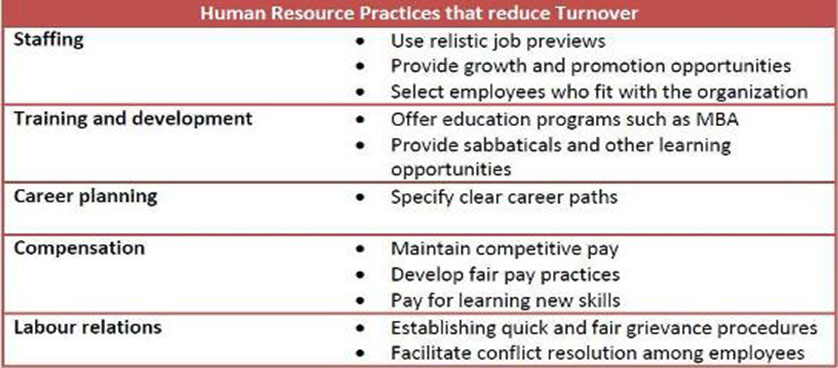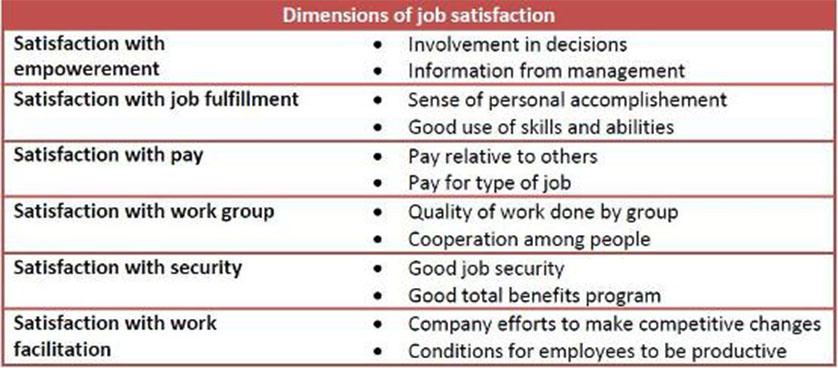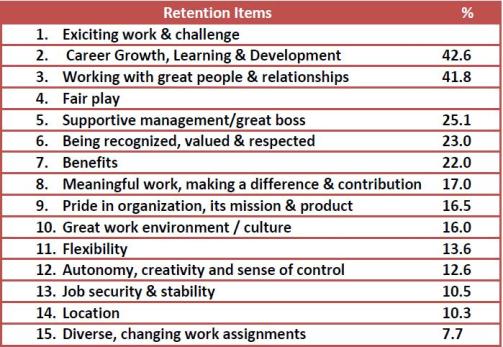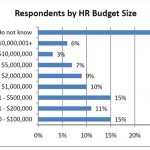Talent Retention – a key value driver of organisational performance
One of the key challenges faced by organization’s leaders in the current business environment is how to retain their talents in order to enable business success. As Broman (2010) acknowledges, “retaining talents isn’t simply a question of “headcount” – it can make the difference between the success or failure of a company and the winning and losing of market share, investors, new clients and contracts”.
Identifying and tracking the key metrics to fine tune retention strategies, is one of the directions that need to be followed in order to secure business success.
One of the topics discussed during the conference “Performance Measurement & KPI for HR” organized by Asia Business Forum in Kuala Lumpur, Malaysia between 29th November-1st December, covered in detail these subject.
Facts and figures on the retention trendsAccording to a Development Dimensions International Inc. Report based on 745 employees responses to a retention survey submitted to 118 organizations:
- 1/3 of all employees surveyed expect to leave job within next year;
- Turnover costs the average organization more than $27 million per year;
- Almost half of the organizations surveyed don’t have any formal strategies for addressing retention. (Adam, 2010)
According with another report presented in The Business Times, Singapore 2010, researching the attrition rate in Asia for 2010, the situation presents as follows:
- Australia – 7,7%
- Indonesia – 5,5%
- Malaysia – 12,2%
- South Korea – 7,3%
- Thailand – 6,4%
- Singapore – 9,1 % (Adam, 2010)
According with Adam (2010), one of the major causes of employee’s decision to leave organizations begins with a sense of low job satisfaction. According with him, “job satisfaction represents a person’s emotional feelings about his of her work. When work is consistent with employees’ values and needs, job satisfaction is likely to be high.”
The most important dimensions of job satisfaction can be depicted in the image above.
Importance of employee retention
Among the major factors of employee turnover that negatively impact the organizational performance are:
- Reducing staff morale
- Increasing training and recruitment costs
- Conducting to inconsistencies in services, and
- Being a self perpetuating problem (Adam, 2010)
Several strategies can be implemented in order to secure better and effective employee retention.

Source: adapted from Adam, 2010 (citing Lee & Maurer, 1997)
Major Retention DriversAmong the most important retention drivers as presented by Adam (2010) citing a report of Career System International, 2005, are Exciting work and challenge, Career growth, learning and development and Working with great people and relationships. All important retention drivers, up to 15, can be depicted in the table below.
Source: adapted from Adam, 2010 (citing Career System International report, 2005)KPIs for Retention – HR Functional Area – smartKPIs.com
For more insights on the best Key Performance Indicators for measuring HR retention strategies visit smartKPIs.com KPI example section. Among the most relevant KPIs recomended for measuring retention performance are:
- % New hire retention
- % Employees that leave the organization in a given time period
- # Employee tenure
- % Involuntary termination rate
- % Employee retention rate
- $ Turnover cost
- Adam, M.H. (2010), Retaining Talents. Maintaining an Effective Retention Indicator, proceeding of the conference Performance Measurements & KPI for HR, Asia Business Forum 2010, Kuala Lumpur, Malaysia, 30 November 2010, representing Aberdeen Learning Solutions, Singapore
- Broman, F. (2010)
- Adapted from Adam, 2010 (citing Schneider et al, 2003)
Additional resources:
- Aberdeen Learning Solutions, (2010)
- Development Dimensions International (2005), Retaining talent: A Benchmarking Study, report prepared by Bernthal, P.R. & Wellins, R.S.
- Lee, T.M. & Maurer, S.D. (1997), The Retention of Knowledge Workers with the Unfolding Model of Voluntary Turnover, Human Resource Management Review , Vol. 7, pp. 247–275.
- Schneider, B.; Hanges, P.J.; Smith, D.B. & Salvaggio, A.M. (2003), Which Comes First: Employee Attitudes or Organizational Financial and Market Performance?, Journal of Applied Psychology Vol. 88, pp. 836–851

Tags: Human Resources performance, Job Satisfaction, Report Analysis, retention strategies






